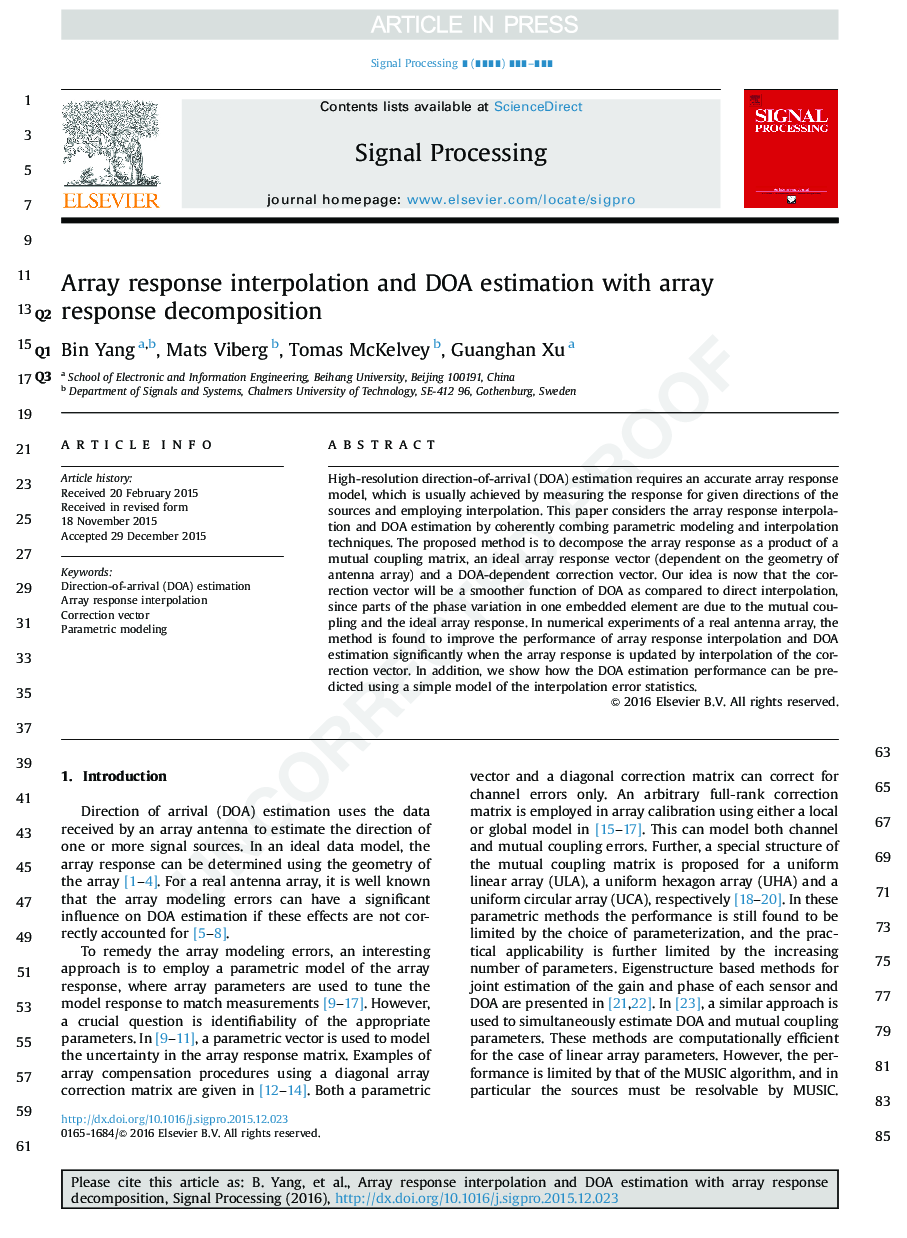| Article ID | Journal | Published Year | Pages | File Type |
|---|---|---|---|---|
| 6958290 | Signal Processing | 2016 | 13 Pages |
Abstract
High-resolution direction-of-arrival (DOA) estimation requires an accurate array response model, which is usually achieved by measuring the response for given directions of the sources and employing interpolation. This paper considers the array response interpolation and DOA estimation by coherently combing parametric modeling and interpolation techniques. The proposed method is to decompose the array response as a product of a mutual coupling matrix, an ideal array response vector (dependent on the geometry of antenna array) and a DOA-dependent correction vector. Our idea is now that the correction vector will be a smoother function of DOA as compared to direct interpolation, since parts of the phase variation in one embedded element are due to the mutual coupling and the ideal array response. In numerical experiments of a real antenna array, the method is found to improve the performance of array response interpolation and DOA estimation significantly when the array response is updated by interpolation of the correction vector. In addition, we show how the DOA estimation performance can be predicted using a simple model of the interpolation error statistics.
Related Topics
Physical Sciences and Engineering
Computer Science
Signal Processing
Authors
Bin Yang, Mats Viberg, Tomas McKelvey, Guanghan Xu,
